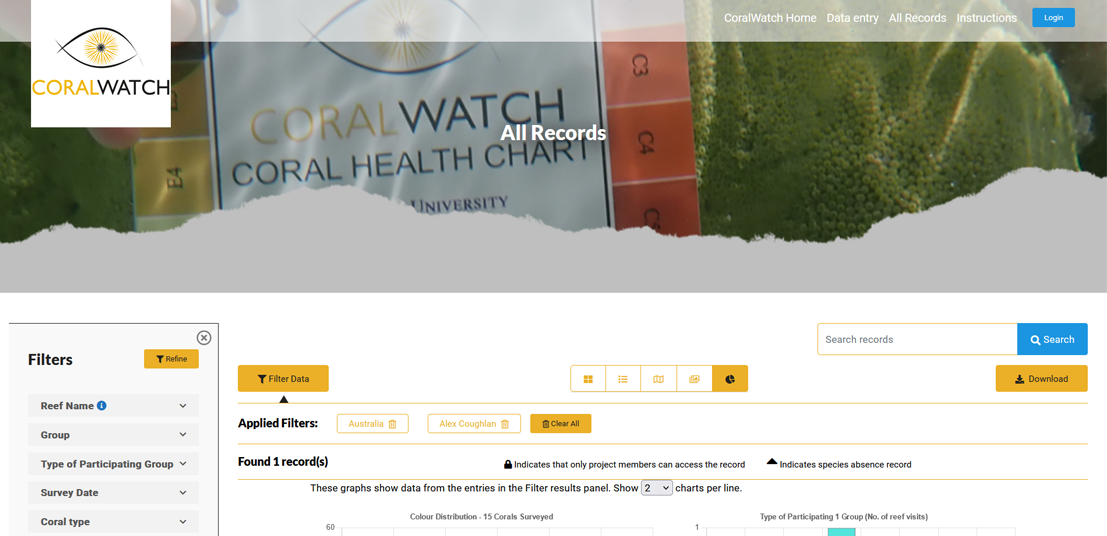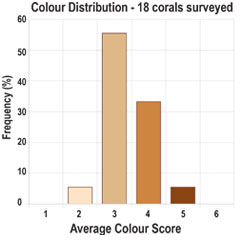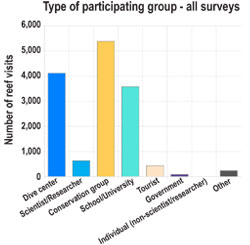
Analyse Your Data
Once you submit your data, your survey results can be viewed online.

Using Filters
Go to ‘All Records’ and use the filter function to find your survey or the reef you are interested to analyse the results. Without using filters, the graphs
previewed are combining ALL the data in the database. The following graphs are automatically generated in the database.
Reef colour score distribution
This bar graph explains the distribution of colour scores
that was recorded for a particular reef.
This will tell you how healthy your reef is today.
A healthy reef has a majority of scores of 3 and more.
This data was collected on 13/10/2021 at Steve’s Bommie,
Great Barrier Reef (QLD), Australia.

Coral type distribution
This pie chart shows the percentages of coral types you included
in your survey. Our global database is publically available on the
CoralWatch website. Anyone can compare the condition of different
reefs at any one point in time,as well as the condition
of a single reef over time. This data was collected on 13/10/2021
at Steve’s Bommie, Great Barrier Reef (QLD), Australia.

Type of participating group
This bar graph shows the different groups such as
dive center, scientists, schools e.g. that have collected the data.
This example shows all data collected from 2003 until August 2022
by groups. You can use the filter function to find out which group
collected data for a specific reef or survey.

Type of Activity
This pie chart shows if data has been collected
during snorkeling, reefwalking or diving.
This example shows all data collected from 2003
until August 2022 by activity. You can use the filter function
to look at less reef or specific survey.

Interpreting results
Some corals are naturally lighter than others. Regular surveys are needed to look at health over time or pick up trends of bleaching and recovery. Coral colour is just one indicator of coral health. Other indicators could be % coral cover, species diversity & richness, and the amount of macroalgae.
If your survey shows very low colour scores or if you recognised bleaching, please take the following actions as described below.
Actions
- Conduct additional CoralWatch surveys to confirm if a bleaching event is occurring.
- Upload photos with your survey from individual corals and reefscape to show the extent of bleaching.
- Spread the word – inspire others to help monitor your reefs (e.g. Facebook, Twitter).
- Contact your local reef management group to further investigate.
Analyse your data further
For more instructions on data analysis – download the PDF .
